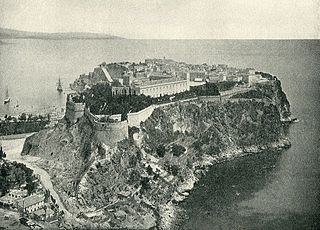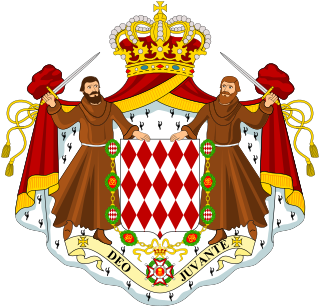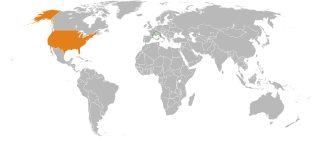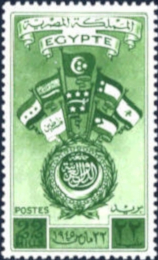
Monaco, officially the Principality of Monaco, is a sovereign city-state and microstate on the French Riviera a few kilometres west of the Italian region of Liguria, in Western Europe, on the Mediterranean Sea. It is bordered by France to the north, east and west. The principality is home to 38,682 residents, of whom 9,486 are Monégasque nationals; it is widely recognised as one of the most expensive and wealthiest places in the world. The official language of the principality is French. In addition, Monégasque, English and Italian are spoken and understood by many residents.

The early history of Monaco is primarily concerned with the protective and strategic value of the Rock of Monaco, the area's chief geological landmark, which served first as a shelter for ancient peoples and later as a fortress. Part of Liguria's history since the fall of the Roman Empire, from the 14th to the early 15th century the area was contested for primarily political reasons. Since that point, excepting a brief period of French occupation, it has remained steadily under the control of the House of Grimaldi.

The mail or post is a system for physically transporting postcards, letters, and parcels. A postal service can be private or public, though many governments place restrictions on private systems. Since the mid-19th century, national postal systems have generally been established as a government monopoly, with a fee on the article prepaid. Proof of payment is usually in the form of an adhesive postage stamp, but a postage meter is also used for bulk mailing.

The Principality of Monaco is a sovereign and independent state, linked closely to France by the Treaty of July 1918, which was formally noted in Article 436 of the Treaty of Versailles of 1919. The foreign policy of Monaco is one illustration of this accord: France has agreed to defend the independence and sovereignty of Monaco, while the Monegasque Government has agreed to exercise its sovereign rights in conformity with French interests, whilst at the same time maintaining complete independence. Since then, the relations between the sovereign states of France and Monaco have been further defined in the Treaty of 1945 and the Agreement of 1963.

This is an introduction to the postal and philatelic history of Italy.
This is a survey of the postage stamps and postal history of British East Africa.

Péronne is a commune of the Somme department in Hauts-de-France in northern France. It is the former site of the Péronne monastery, founded by the Anglo-Saxon Eorcenwald. Its site became the resting place for St. Fursa, celebrated by the famous English historian Bede. The monastery was popular with Irish monks, among them Cellanus, whose letters to Aldhelm the Bishop of Sherborne survive. So renowned was Péronne for Irish monks that the monastery became known as Perrona Scottorum. The monastery was destroyed in a Viking raid in 880. It is close to where the 1916, first 1918 and second 1918 Battles of the Somme took place during the First World War. The Museum of the Great War is located in the château.

The postal history of Malta began in the early modern period, when pre-adhesive mail was delivered to foreign destinations by privately owned ships for a fee. The earliest known letter from Malta, sent during the rule of the Order of St John, is dated 1532. The first formal postal service on the islands was established by the Order in 1708, with the post office being located at the Casa del Commun Tesoro in Valletta. The first postal markings on mail appeared later on in the 18th century.

La Poste is a postal service company in France, operating in Metropolitan France, the five French overseas departments and regions and the overseas collectivity of Saint Pierre and Miquelon. Under bilateral agreements, La Poste also has responsibility for mail services in Monaco through La Poste Monaco and in Andorra alongside the Spanish company Correos.
The Treaty of Péronne was signed on September 14, 1641, in Péronne, France between Honoré II, Prince of Monaco, and Louis XIII, King of France. Based on the terms of the treaty, Prince Honoré permitted Monaco to become a French protectorate in return for guarantees entailing the preservation of his rights as sovereign. Moreover, Honoré wanted to be included in all French treaties and be given grants of land in France as compensation for any privately-owned territories he might lose in Habsburg Spain. Overall, the treaty led to the removal of the Spanish garrison in Monaco by the French and ultimately regulated the relations between France and Monaco for 150 years.

This is a survey of the postage stamps and postal history of Montenegro.

Monaco and the United States exchanged consular officials soon after the end of the U.S. Civil War. The first consul from Monaco to the US was Louis Borg, who presented his credentials in May 1866.

The Musée de La Poste is the museum of the French postal operator La Poste. It specialises in the postal history and philately of France. Opened in 1946, the museum has been located on two sites in Paris. The museum was closed for redevelopment from 2014 to November 2019.

The postal history of Turkey and its predecessor state, the Ottoman Empire, dates to the 18th century when foreign countries maintained courier services through their consular offices in the Empire. Although delayed in the development of its own postal service, in 1863 the Ottoman Empire became the second independent country in Asia to issue adhesive postage stamps, and in 1875, it became a founding member of the General Postal Union, soon to become the Universal Postal Union. The Ottoman Empire became the Republic of Turkey in 1923, and in the following years, its postal service became more modernized and efficient and its postage stamps expertly designed and manufactured.
The Bureau d'études des postes et télécommunications d'outre-mer was a French public institution, financially autonomous. Linked to the French Minister of Cooperation, its goal was to help in the postal and telecommunication areas the French Overseas territories and the newly independent states that asked for it. It operated from 1956 until late 1994.

The postal history of Monaco can be traced to the principality's first postmark in 1704. Stampless covers are known with both manuscript and handstamp postmarks for Monaco and Fort d'Hercule ; as the principality was once much larger, postmarks of the communes of Menton and Roquebrune prior to their 1848 secession might also be included. Monaco used Sardinian stamps from 1851 until 1860, when by the Treaty of Turin, Sardinia ceded to France the surrounding county of Nice and relinquished its protectorate over Monaco; French stamps with Monaco or Monte-Carlo postmarks were used thereafter. Two forms of cancellation are known for the French period. With the first, the postmark is on the cover away from the stamps; an obliterator with an identifying post office number 4222, or later 2387, inside a diamond of ink dots cancelled the actual stamps. The second applied the postmark directly on the stamps, as both a date stamp and cancel. All of these postal forerunners, particularly usages of Sardinian stamps with Monaco cancels, are far more valuable than the same stamps postally used in the issuing countries.

This is a survey of the postage stamps and postal history of Egypt.
Events from the year 1641 in France.

Conscription in Monaco existed during a brief time between 1848 and 1870 when the Monégasque Militia was active. Since then, Monégasque citizens have been exempt both from conscription and direct taxation.

The Treaty of Stupinigi was signed on November 8 and 10 1817, in Stupinigi between Honoré V, Prince of Monaco, and Victor Emmanuel I of Sardinia.
















